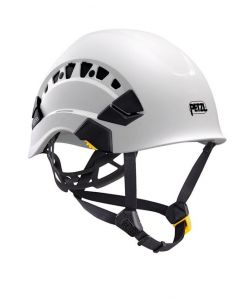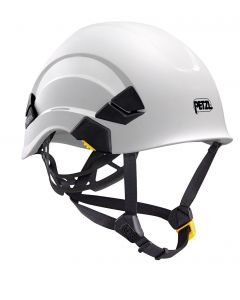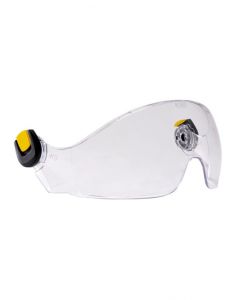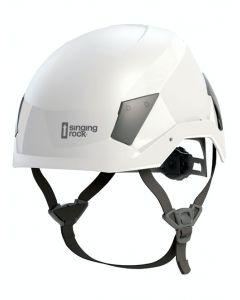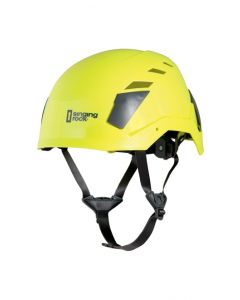Head Protection
A protection helmet is required when working at height, with the design and conformity dependent upon the circumstances and environment it is to be used. In UK the two most common standards are EN397, which relates to helmets for industrial use, and EN12492, which is a climbing and mountaineering helmet standard. There are a few design and performance differences between these, which means that no one helmet can conform in full to both standards. One of the important differences between these two standards is the chin-strap test, with EN397 requiring the chinstrap strength to be less than 25kg, so as to reduce the risk of strangulation of the helmet is snagged; whilst EN12492 requires the chinstrap to be greater than 50Kg, so as to reduce the risk of the helmet coming off in the event of a fall. There are a few helmets with chinstraps which have a switch to allow the user to change the strength to meet each standard. A clever system but with one drawback, that without closer scrutiny, it is not clear to a supervisor whether the chinstrap is on its weaker or stronger setting. Whilst both helmets are tested for their protection against falling objects, the requirements are not easily comparable even though the weight used (5Kg) and the impact point (top of the crown) for the test are the same. For EN12492 the test weight is dropped 2m and requires the impact force to be no greater than 10kN, with EN397 the weight is dropped from 1m but requires the impact force to be no greater than 5kN. EN397 also includes a test for flame resistance and protection against molten metal splash.
 UK
UK US
US










